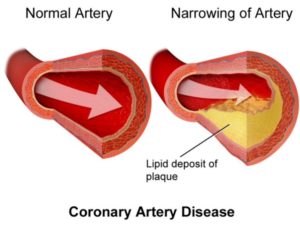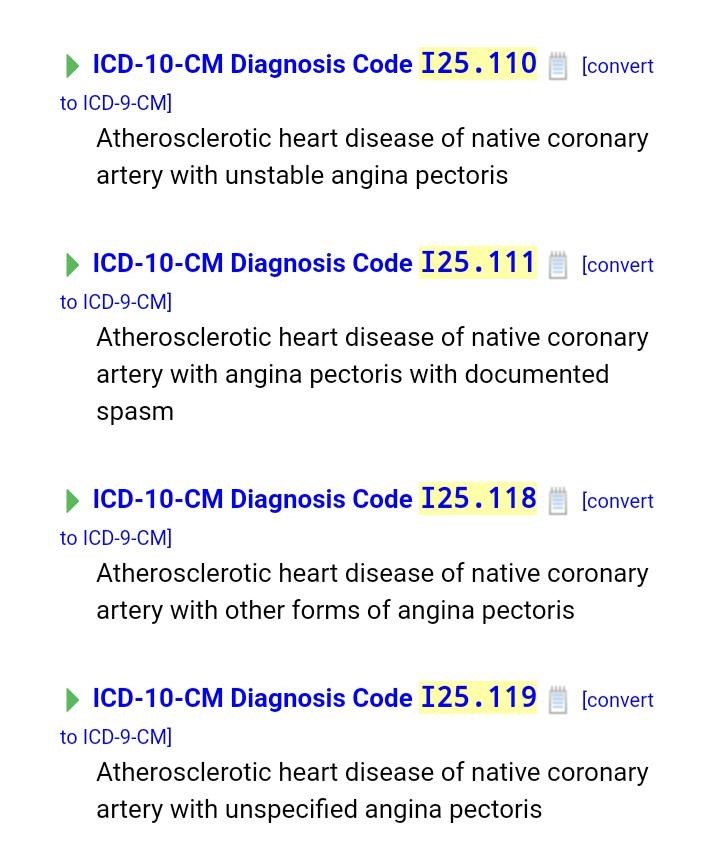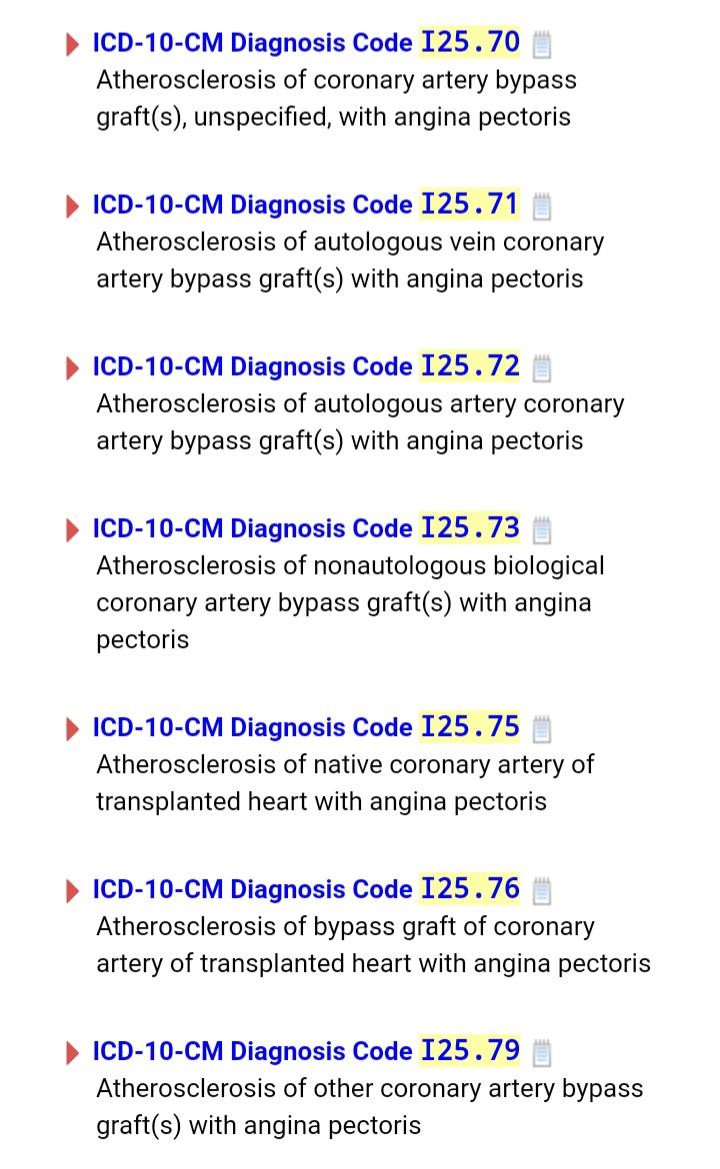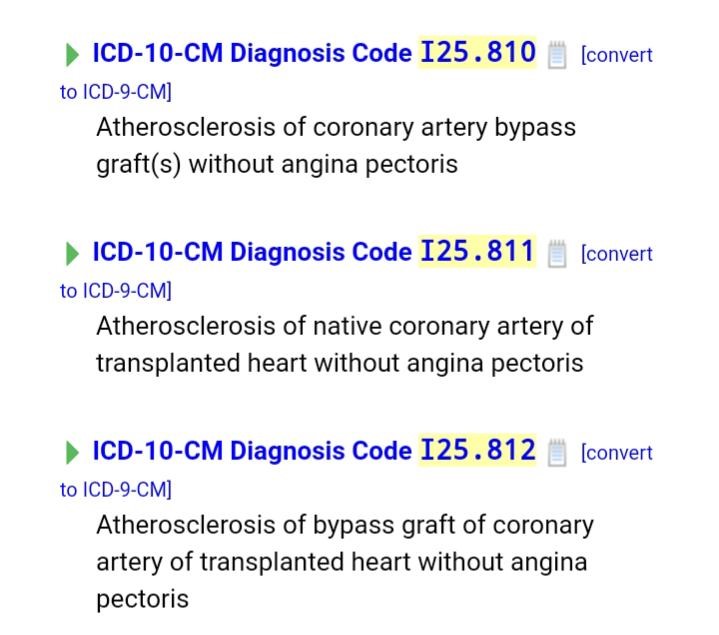CAD ICD 10 – Coronary Artery Disease
Let us learn about symptoms and diagnosis of Coronary Artery Disease, CAD ICD 10 guidelines with examples.
Coronary Artery Disease (CAD) is the blockage of coronary arteries due to cholesterol and fatty deposits called plaques. This is a chronic disease which can lasts for years or be lifelong. Heart attack occurs if the coronary artery is completely blocked.

Symptoms and diagnosis
Symptoms includes chest pain or angina and shortness of breath. Conditions like high blood pressure, high cholesterol, diabetes, obesity and family history of heart disease are risk factors for CAD.
Physician will ask about the patient’s medical and family history and do a physical exam. Diagnosis can be made by doing lab tests, EKG, exercise stress test, nuclear stress test, angiogram or cardiac CT scan.
CAD ICD 10 codes and guidelines
CAD ICD 10 Codes are located in chapter 9, diseases of circulatory system, code range I00-I99
Below are few guidelines to follow when coding CAD
- Remember to confirm if the CAD is in native artery (artery with which the person is born) or bypass graft (graft inserted during CABG procedure)
- Check past surgical history to know if the heart is transplanted or not
- Angina should be combined and coded with CAD unless there is documentation that the angina is due to some other reason.
- See for excludes 1 note when coding CAD and angina.
- See for ‘code first’ note with I25.82 and I25.83
I25.10 – CAD. This is the common code used for unspecified CAD of native artery without angina.






will see few examples to understand how to code CAD.
CAD ICD 10 Code Example 1
Jerome is a 74-year-old man with a history of hypertension who comes to emergency room with non-radiating chest pain from past few hours. He denies syncope, fever or cough. His medication list includes Lisinopril and nitroglycerin. He has a family history of heart attack, mother died of MI last year. BP showed 150/80 mmHg, heart rate of 60 bpm. There is no abnormal heart sounds, lung and abdomen examinations are normal. EKG showed normal sinus rhythm. Angiogram was performed which showed calcification in the right coronary artery.
CAD ICD-10 codes for this case would be:
- 10 – CAD
- I10 – Hypertension
Note : Calcification leads to atherosclerosis.
CAD ICD 10 Code Example 2
Jennifer, 69 year old woman is here in the hospital with acute onset of shortness of breath from past few days. She has a history of CAD, MI, high cholesterol and diabetes. She takes insulin for diabetes. Her family history does not show any heart diseases. She denies fever, chills, abdominal pain, vomiting or nausea. She does not use tobacco. Initial physical exam showed temperature 97.2 F, heart rate 74 bpm, respiratory rate 24, BP 104/54, BMI 40.2, oxygen saturation 90% on RA. She is a morbidly obese woman. chest exam showed heart murmur. Work up performed are CBC, CMP, lipid profile, EKG and cardiac CT. Case was diagnosed as CAD due to lipid rich plaque, hypercholesterolemia.
ICD-10 codes for this case would be:
I25.10 – CAD
I25.83 – CAD due to lipid rich plaque
E78.00 – Hypercholesterolemia
I25.2 – Old MI
E11.9- DM
E66.01 – Morbid obesity
Z79.4 – Insulin use
Z68.41 – BMI
Note : Coded I25.10 as primary Dx as per ‘code first’ note with I25.83
CAD ICD 10 Code Example 3
75 year old Mary is in the hospital with her daughter for exertional chest pain from past 2 months. She also has diabetes and hypertension for which she is on medication. Vitals are stable except BP of 152/90 mmHg. EKG report showed normal sinus rhythm. An exercise stress test was performed which showed chest pain. Based on this an angiogram was also performed. Final assessment is documented as stable angina and CAD.
ICD-10 codes for this case would be:
I25.118 – CAD with other forms of angina
I10 – HTN
E11.9 – DM
Note : Angina should be combined with CAD unless stated the angina is due to some other reason.